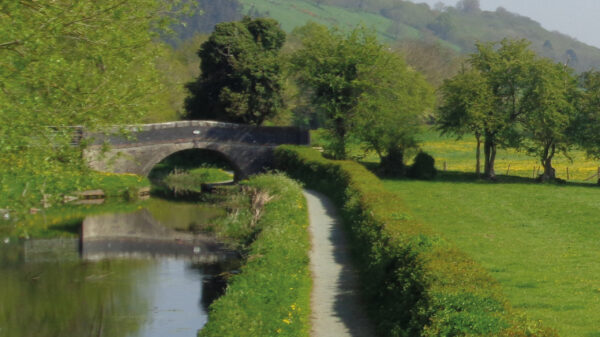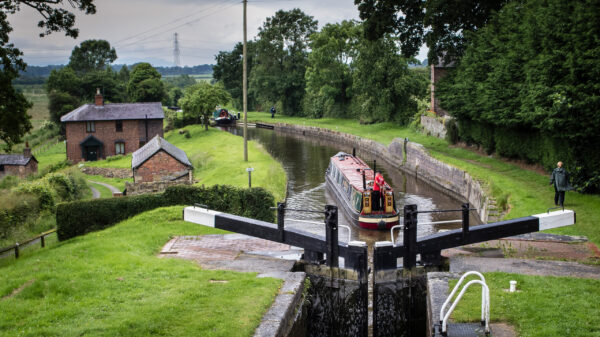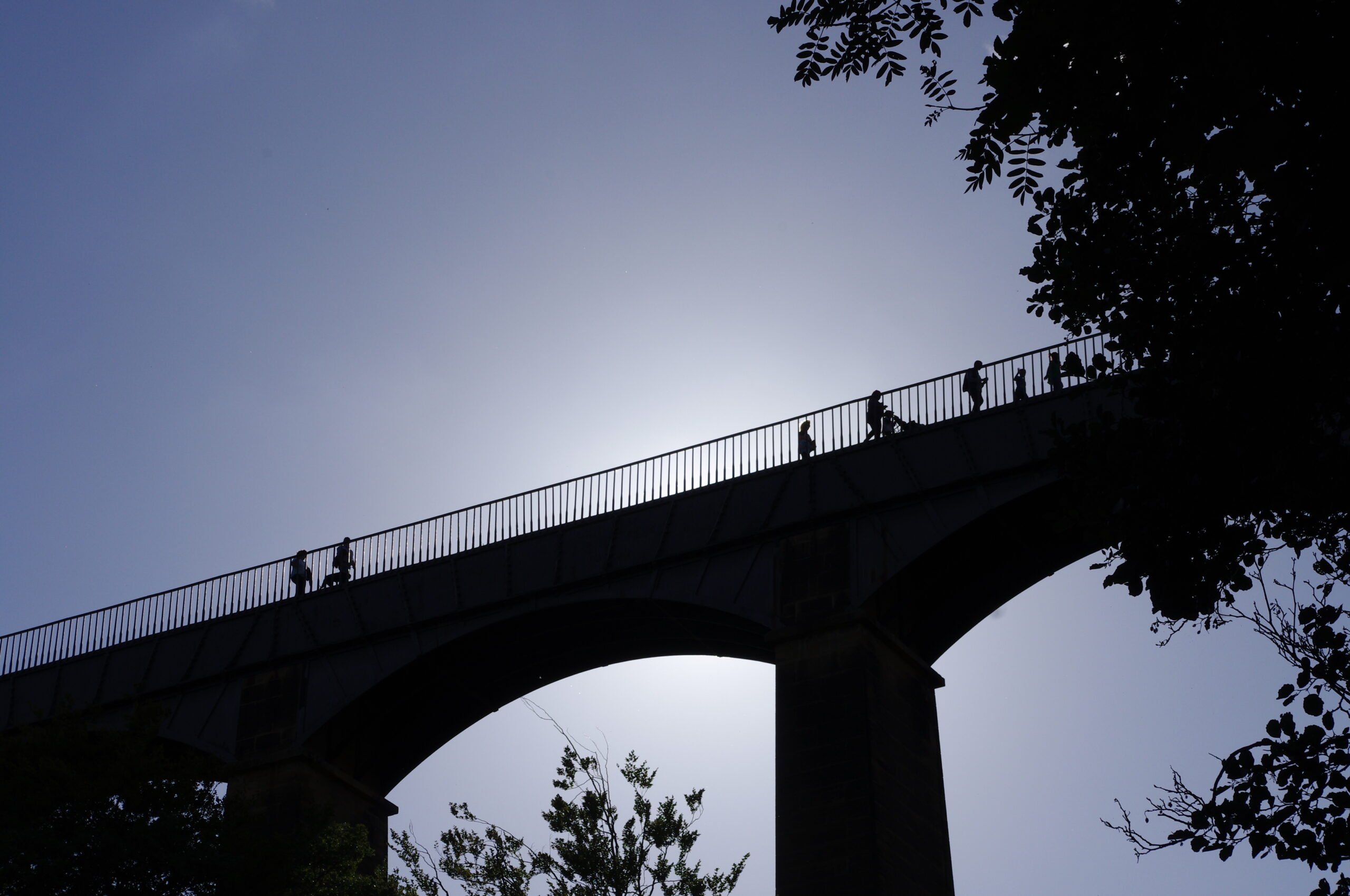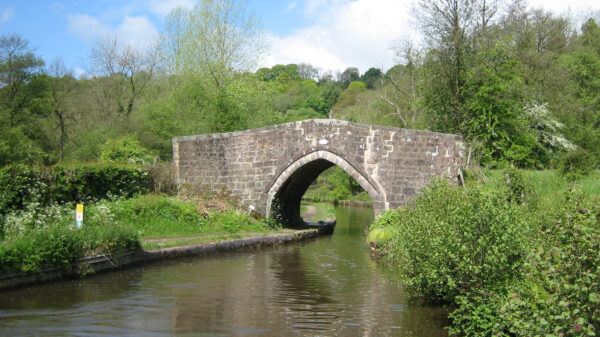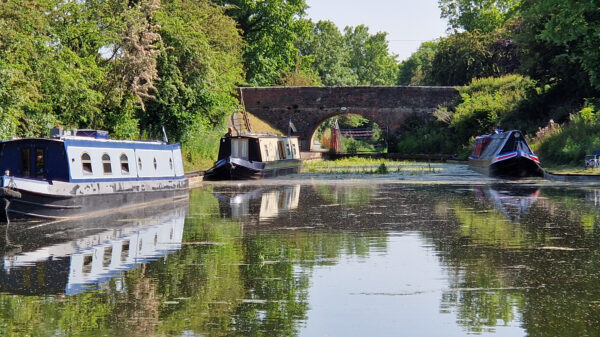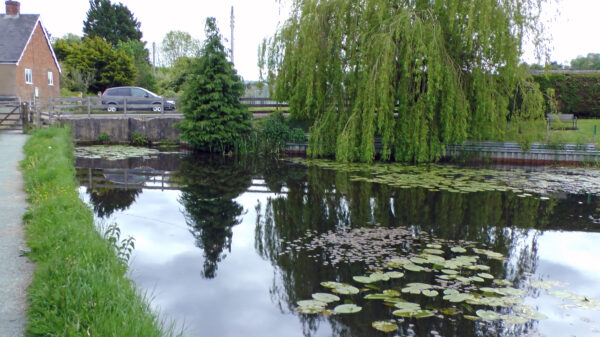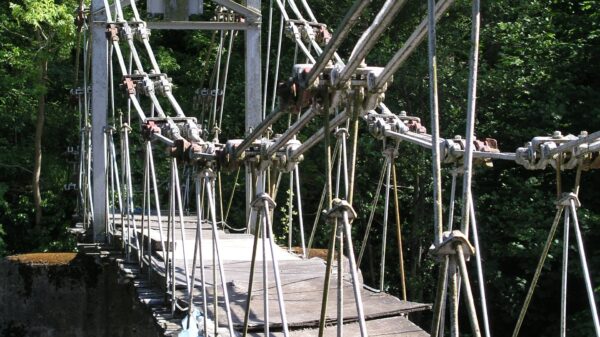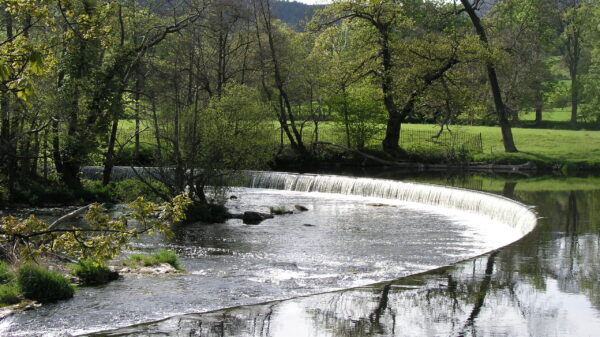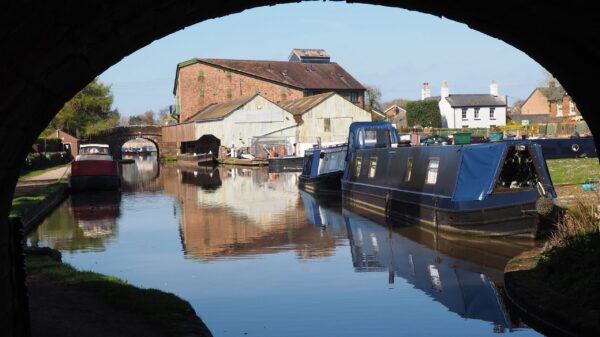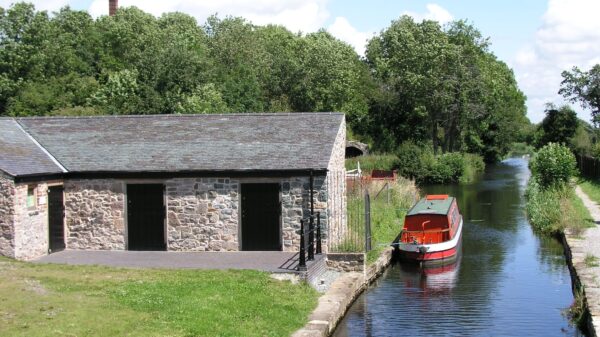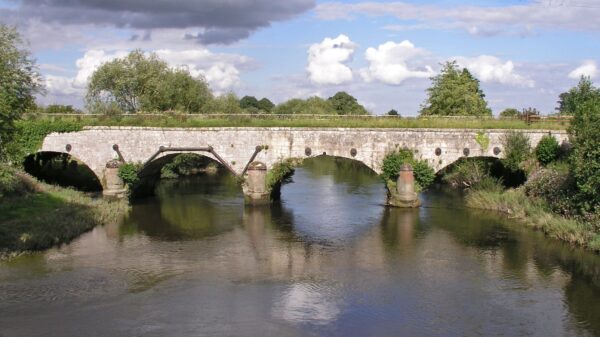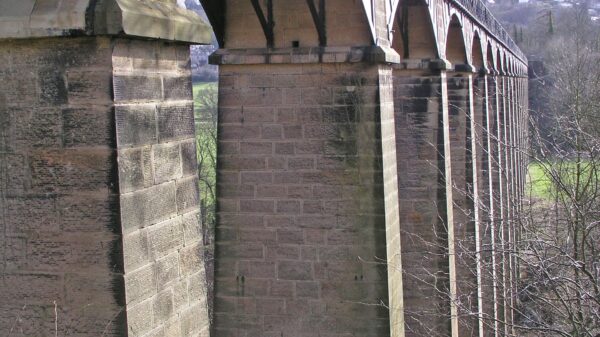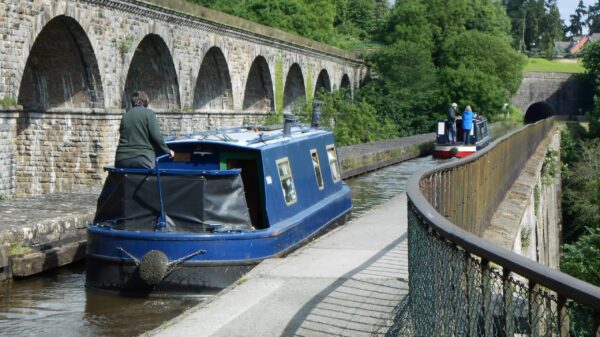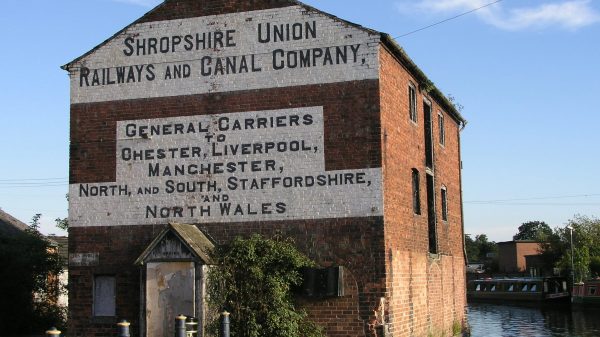About the Montgomery Canal
The present day Montgomery Canal runs from Frankton Junction for 35 miles to Newtown with 25 locks. Previously, the original Montgomery Canal from Llanymynech to Newtown, became part of the Shropshire Union amalgamated canal network. It was constructed mainly to transport limestone from the Llanymynech quarries and coal from Chirk and Oswestry, for example, to canal side kilns. Quicklime was made in these kilns and used to improve the soil quality and crop yield. However, with the introduction of the motor lorry, the use of the canal gradually diminished. The Canal was formally closed in an Act of 1944 following de facto closure in 1936 after a major breach.
[Photo: Lock at Carreghofa – by Andrew Denny]


